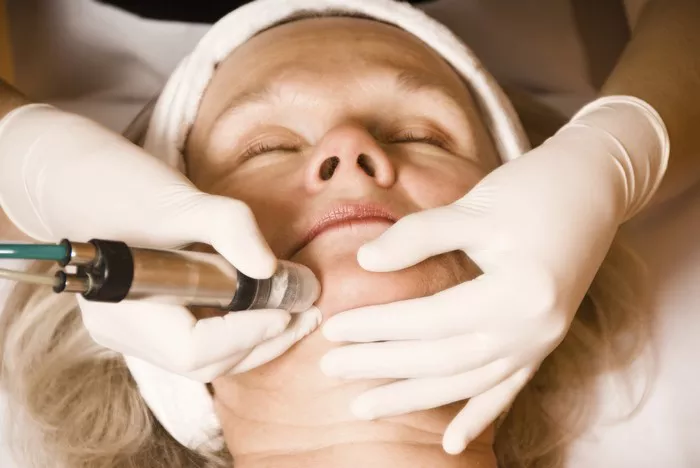Microdermabrasion is a popular cosmetic procedure that can help rejuvenate and refresh the skin, leaving it smoother and more youthful-looking. It’s a non-invasive treatment that is often considered by individuals looking to address various skin concerns. However, the question of when to start microdermabrasion is one that many people ponder. In this comprehensive guide, we will explore the factors that determine the appropriate age for microdermabrasion and provide insights into its benefits, risks, and considerations.
Understanding Microdermabrasion
1.1. What is Microdermabrasion?
Microdermabrasion is a cosmetic procedure that involves the removal of the outermost layer of skin to improve its texture, tone, and overall appearance. This treatment is typically performed using a handheld device that exfoliates the skin with tiny abrasive crystals or a diamond-tipped wand. Microdermabrasion can be used to address a variety of skin concerns, including fine lines, wrinkles, acne scars, enlarged pores, and uneven skin tone.
1.2. How Does Microdermabrasion Work?
During a microdermabrasion session, the outer layer of dead skin cells is gently exfoliated, revealing fresher, healthier skin beneath. The procedure also stimulates collagen production, which can lead to improved skin elasticity and a reduction in the signs of aging. Microdermabrasion is known for its quick recovery time, making it a popular choice for those seeking minimal downtime.
Benefits of Microdermabrasion
2.1. Skin Rejuvenation
Microdermabrasion can help rejuvenate the skin by promoting cell turnover and collagen production. This can result in a more youthful and radiant complexion.
2.2. Reduction of Fine Lines and Wrinkles
The exfoliation process in microdermabrasion can reduce the appearance of fine lines and wrinkles, making it an attractive option for those looking to combat the signs of aging.
2.3. Improvement of Skin Texture
Individuals with rough or uneven skin texture can benefit from microdermabrasion as it smoothes the skin’s surface, leaving it softer and more even.
2.4. Treatment of Acne Scars
Microdermabrasion can be effective in reducing the appearance of acne scars by gradually removing damaged skin cells and promoting the growth of new, healthy ones.
2.5. Minimization of Enlarged Pores
For individuals with enlarged pores, microdermabrasion can help reduce their size and improve overall skin texture.
2.6. Enhanced Absorption of Skincare Products
Exfoliating the outer layer of skin with microdermabrasion can enhance the absorption of skincare products, allowing them to penetrate deeper into the skin for better results.
Determining the Right Age for Microdermabrasion
3.1. Consultation with a Licensed Professional
The decision to undergo microdermabrasion should be made after a consultation with a licensed dermatologist or skincare specialist. These professionals can assess your skin type, condition, and individual needs to determine whether microdermabrasion is appropriate for you and when it should begin.
3.2. Age Considerations
While there is no specific age at which microdermabrasion is universally recommended, certain factors can influence when it might be suitable:
Adolescence: Microdermabrasion is generally not recommended for individuals in their early teens. The skin is still developing during this stage, and it’s essential to prioritize gentle skincare routines.
Late Teens to Early Twenties: Microdermabrasion may be considered for individuals dealing with acne, acne scars, or uneven skin texture during this period. However, it should be done under professional guidance.
Mid to Late Twenties and Beyond: Microdermabrasion is often more common among individuals in their late twenties and beyond, as they may start to experience the early signs of aging and seek skin rejuvenation.
3.3. Skin Type and Concerns
The appropriateness of microdermabrasion can also depend on your skin type and specific concerns. Those with sensitive skin may require a milder approach, while individuals with resilient skin may opt for more intensive treatments.
3.4. Medical History
Your medical history, including any skin conditions, allergies, or medications you are taking, should be discussed with your healthcare provider before undergoing microdermabrasion.
Risks and Considerations
4.1. Potential Risks
While microdermabrasion is generally considered safe, there are some potential risks and side effects to be aware of, including:
Temporary redness and irritation
Mild swelling
Sensitivity to sunlight
Rare instances of bruising or infection (when not performed by a trained professional)
4.2. Frequency of Treatments
The frequency of microdermabrasion treatments can vary depending on individual needs and skin concerns. It is typically recommended as a series of sessions, followed by maintenance treatments as necessary.
4.3. Post-Treatment Care
Proper post-treatment care, including sun protection and skincare routines recommended by your provider, is essential to maximize the benefits of microdermabrasion and minimize potential risks.
Conclusion
In conclusion, the decision of when to start microdermabrasion should be based on individual factors such as skin type, concerns, and the guidance of a licensed skincare professional. While there is no specific age requirement, it’s crucial to prioritize skin health and seek professional advice to determine the most suitable timing for this cosmetic procedure.
Microdermabrasion can be a valuable tool for achieving smoother, more radiant skin and addressing various skin concerns. When approached with the right information and professional guidance, individuals of different ages can benefit from this non-invasive and effective skincare treatment.

